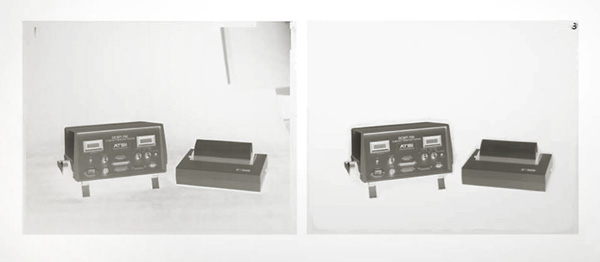
Meeting 10
Working session in darkroom lab
Farmer's Reducer demonstration in lab
Farmer's Reducer is the name given to a variety of silver-solvent solutions mixed from two chemicals - potassium ferricyanide and sodium thiosulfate. Note that sodium thiosulfate is plain fixer - not rapid fixer.
Because Farmer's reducer dissolves silver, it lightens traditional silver prints and will reduce density in negatives. While not as commonly employed as in the past, some darkroom workers treat local areas of their prints after processing as a sort of post-printing dodge.
There are a host of formulas available for using Farmer's Reducer, but I've settled on a two-tray method because the solutions last longer. In the traditional method, the two chemicals in solution form are mixed together but this has a very short working life of a few minutes. The two-tray method I prefer keeps the solutions separate, and only the solution that is absorbed in the print is consumed when working.
Here is a handout that lists a couple methods. The two-solution method I prefer is listed on the second page.
Farmer's reducer can dissolve silver in both prints and in negatives. Below are a pair of negatives of some electronic equipment photographed against a black-velveteen background. Both negatives originally had some tone in the background that was visible when printed, as well as part of a lighting flag intended to keep light off the back of the set. The client desired a solid black background for the electronics, but the tone in the original negatives printed too light and showed the texture of the velveteen.
After applying Farmer's reducer locally with Q-Tips and small spotting brushes, [negative on right], tone from the background has been removed and it printed with solid black as specified by the client.
